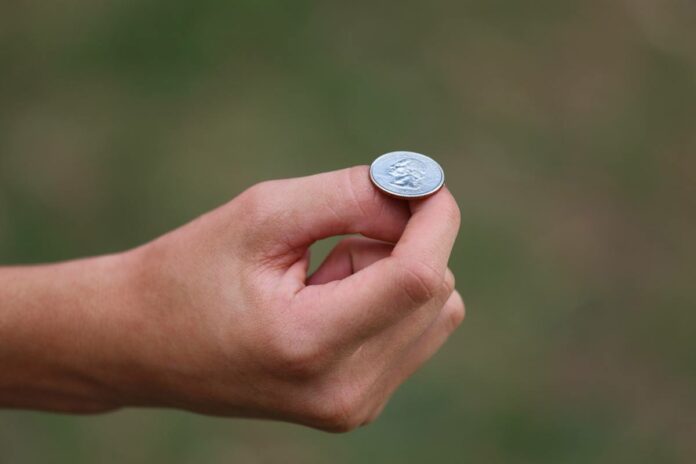In this article, we will explore the fascinating world of probability through a classic experiment: the coin toss. Probability is a fundamental concept in mathematics and plays a crucial role in various fields, from statistics to finance. By understanding the laws of probability, we can make predictions, analyze risks, and make informed decisions. So let’s dive into the laws of probability using the coin toss lab as our guide.
Table of contents
Introduction
Probability is the study of uncertainty and the likelihood of events occurring. It helps us quantify the chances of different outcomes and make sense of random events. The coin toss is a simple yet powerful experiment that can help us grasp the basic principles of probability.
Theoretical Background
Before we delve into the coin toss lab, let’s establish a foundation by understanding some key concepts. Probability is defined as the measure of the likelihood of an event occurring. In the context of the coin toss, we have two possible outcomes: heads or tails. These outcomes form the sample space, which represents all the possible outcomes of an experiment.
The laws of probability govern the relationships between events and guide us in making predictions. These laws include the Law of Large Numbers, Law of Addition, Law of Multiplication, and Conditional Probability.

Coin Toss Experiment
To conduct the coin toss lab, you need a coin and a flat surface. Start by flipping the coin and observing the outcome. Record whether it lands on heads or tails. Repeat the process multiple times to gather data and observe patterns.
The coin toss experiment’s sample space consists of two elements: heads and tails. Each flip is an independent event, meaning the outcome of one flip does not affect subsequent flips.
Law of Large Numbers
The Law of Large Numbers states that as the number of trials increases, the observed relative frequency of an event gets closer to its theoretical probability. In the coin toss lab, as you perform more flips, the ratio of heads to total flips should approach the expected probability of 0.5.
For instance, if you toss the coin 100 times, you might expect around 50 heads. However, due to the inherent randomness, you might observe a slightly different ratio. Nevertheless, as the number of tosses increases, the observed ratio should converge to the expected probability.
Law of Addition
The Law of Addition, also known as the Addition Rule, deals with the probability of the union of two or more events. In the context of the coin toss, this law helps us calculate the probability of getting either heads or tails.
The probability of the union of two mutually exclusive events, like heads and tails, is calculated by adding their individual probabilities. Since there are only two outcomes in a coin toss, the probability of getting either heads or tails is 1.
Law of Multiplication
The Law of Multiplication enables us to calculate the probability of the intersection of two or more events. In the coin toss experiment, this law helps us determine the probability of getting a specific sequence of outcomes.
For example, if you toss a fair coin twice, the probability of getting heads on the first toss and tails on the second toss is 0.5 (probability of heads) multiplied by 0.5 (probability of tails), which equals 0.25.
Conditional Probability
Conditional probability measures the likelihood of an event occurring given that another event has already occurred. In the coin toss lab, we can apply conditional probability to analyze the outcomes based on certain conditions.
For instance, what is the probability of getting heads on the second toss given that the first toss resulted in tails? The probability would still be 0.5 since each flip is independent of the previous flip.
Independence and Dependence
Events are considered independent if the occurrence of one event does not affect the probability of the other event. In the coin toss experiment, each toss is an independent event. The outcome of one toss does not influence the outcome of subsequent tosses.
On the other hand, events are dependent if the occurrence of one event affects the probability of the other event. In the coin toss lab, an example of dependence would be if we introduced a biased coin that has a higher probability of landing on heads. In such a case, the outcomes of subsequent tosses would be influenced by the bias.
Conclusion
Understanding the laws of probability is crucial in various fields, from data analysis to decision-making. Through the coin toss lab, we have explored the concepts of probability, including the Law of Large Numbers, Law of Addition, Law of Multiplication, and Conditional Probability. By grasping these fundamental principles, we can better navigate the uncertainties of the world.
So next time you flip a coin, remember the laws of probability at play. It’s not just a simple game; it’s an opportunity to delve into the fascinating realm of chance.
FAQs
The coin toss experiment provides a simple and tangible way to grasp the basics of probability. It helps us understand concepts like sample space, events, and the laws of probability.
The laws of probability are applicable in numerous real-life scenarios. They help us analyze risks, make predictions, assess uncertainties, and make informed decisions.
Absolutely! Probability calculations can be applied to various random events, such as rolling dice, drawing cards, weather forecasting, financial markets, and more. Probability is a versatile tool applicable to many domains.
While the coin toss experiment provides valuable insights into probability, it is a simplified model. Real-world scenarios often involve more complex events, dependencies, and variables. Nonetheless, the coin toss lab serves as a foundation for understanding more intricate probability concepts.
Probability helps us assess the likelihood of different outcomes, enabling us to make rational decisions based on available information. It allows us to evaluate risks, weigh potential outcomes, and make informed choices.

